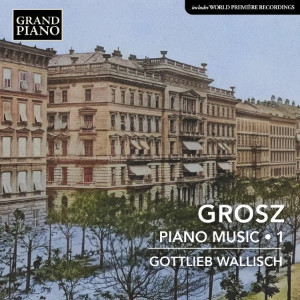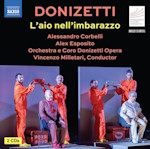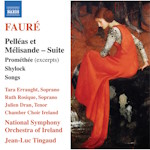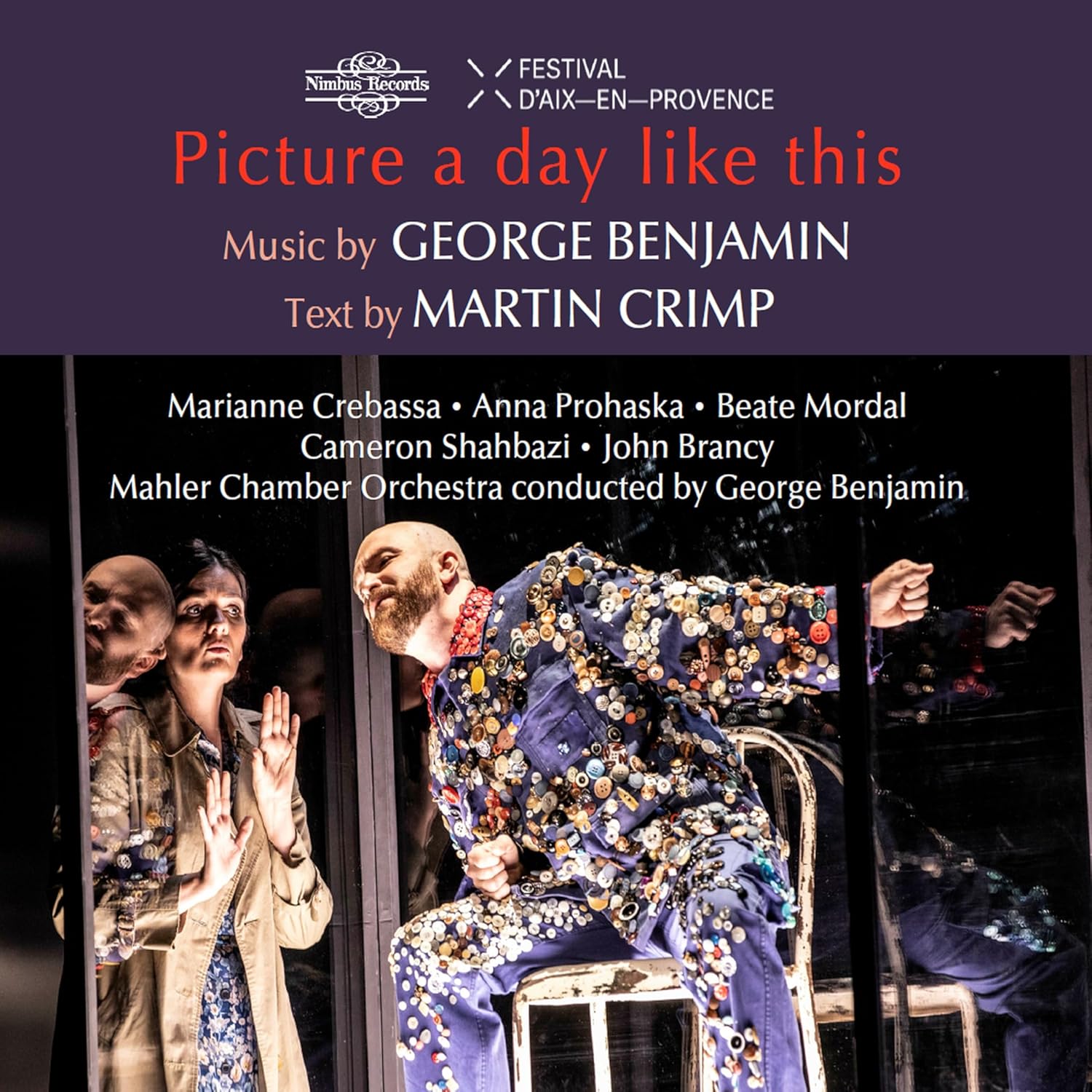
Wilhelm Grosz (1894-1939)
Piano Music 1
Zwei Stücke aus der Bühnenmusik zu Franz Werfels Magischer Trilogie “Spiegelmensch” Op.12 (1922)
Tanzsuite (1913/1921)
Sonatina sopra E-H-A-E Op.-2 (1925)
Tanzsuite No.2 (1925)
Piano Sonata in G Major Op.21 (1926)
12 Improvisations Op.45 (1938-39)
Gottlieb Wallisch (piano)
rec. 2023, Klaus von Bismarck-Saal, WDR Funkhaus, Cologne, Germany
Grand Piano GP927 [73]
I approached this disc assuming that I knew nothing of the composer’s work only to read that he was the author of such songs as Red Sails in the Sunset and Isle of Capri. You wouldn’t necessarily guess this looking at hiscredentials; his studies were with Franz Schreker, Robert Fuchs, Guido Adler and Richard Heuberger though perhaps the latter, composer of Der Opernball, might give a hint. Like his contemporary Erich Korngold he left Vienna in the early 1930s to escape the rise of the Nazi Party, witnessing first hand what they were capable of with the death of a friend. Grosz and his family travelled to London where he was something of a success though not through the music for which he had received acclaim back in Vienna; it was popular song that made his name – his wide-ranging experience as musical recording director of the Ultraphon record company, for which he also recorded five popular classical pieces, paid dividends here. Five years later in 1939 he travelled with his wife to America where he completed the set of Improvisations that close this recital but further success was curtailed by his untimely death in December of that year.
The music heard here is very tonal though etched through with that supreme chromaticism characteristic of the age and, as we progress through the years, an increasing complexity of rhythm and texture. This first volume includes his two Dance Suites, the first written in 1913 and 1921 and the second following in 1925. My immediate thought on hearing the menuet that opens the first dance suite was the similarity to the writing of Ignaz Friedman and Leopold Godowsky, especially in his baroque transcriptions, that mix of romantically dappled dance movements laced with a piquant turns of harmony that make for high quality salon music. The final two movements, waltz and polka, were written in 1921, some eight years after the menuet and gavotte and musette that form the first two movements but Grosz manages to match them remarkably well in mood. The second suite comprises modern dance forms, Foxtrot, Boston (a waltz), tango, shimmy and quasi fivestep and continues in much the same way though the writing has more chromatic complexity. The foxtrot reminded me a little of Vladimir Horowitz’s danse excentrique though Grosz’s imagination is more wide-ranging. Boston is a delicious slow waltz whose layered textures inhabit the world of Debussy as does the sinuous and highly jazz-inspired tango. Shimmy has quirky humour in the cakewalk of its staccato passages combined with more elegance at its heart. Quasi Five step is subtitled dance-fantasy and its writing is quite brutish at times compared to the other movements, the bass ostinato octaves stomping out its five beats – amongst many time signatures – though there is subtlety in the toccata-like music that springs from its opening bars. The Sonatina sopra E-H-A-E appeared in the same year as the second Dance Suite but remains in manuscript; it was written for Universal Edition’s 25th birthday celebrations with E H representing UE’s director Emil Hertzka and A E (just about) representing Universal Edition, those letters forming the themes of each short movement. The opening march is perky and angular while the middle movement is a dreamy barcarolle Serenade which briefly gives way to a plucked guitar-like instrumental. The finale is an impish step time dance. A little of Grosz’s humour, already evident though a lot of the writing here is seen in the sonatina’s designation as Op. Minus 2. The G major sonata followed a year later, its first movement longer than the entire Sonatina though this is not itself a huge work. There is a quite a tranquil, pastoral feel to the first theme and though it occasionally gives way to a more rhythmic figure these passages are peppered with reflective music that has an improvisatory feel to it. The slow movement is a lilting siciliano with slight touches of impressionism and the work is brought to a close with a whirling and virtuosic finale, driving and urgent. It is based around one short rising theme that develops out of the running notes at the start and though this theme features throughout it is the varied contrapuntal writing that makes it so successful.
Grosz’s earlier orchestral Serenade op.5 and Tanz op.7 had been played by the Vienna Philharmonic under Felix Weingartner and it was on the strength of these works that he was invited to provide incidental music for Franz Werfel’s Magical poem in two parts Spiegelmensch. The actual play was not that successful but one can’t fault the music which was well received, enough so that the Prelude and Wedding march were quickly produced in the piano versions that are played here. The Vorspiel certainly evokes portentous things to come with its fanfare like opening, continuous sense of growing intensity and magical sounding minor second chord changes of harmony. I would have loved my wife to walk down the aisle to the impish scherzo-like Wedding March though I would definitely have received The Look if I’d dared to suggest this daintily tripping otherworldly piece to her. That leaves the twelve improvisations which he began in England in 1938 and which were completed in America just four months before his early death. Without stepping backwards Grosz seems to achieve a wonderful fusion of his writing in the Sonatina or second Tanzsuite with jazz influences and the popular music he had been writing since he left Vienna. I was reminded a little of Prokofiev in the first two bustling pieces though Grosz’s pieces are not as acerbic as the Russian’s; they do have the sense of humour and sound incredibly well written for the instrument. Grosz only named one, Prayer, the fervent tenth improvisation though the final piece is marked Tempo di Tango and is unmistakeably so with its beguiling rhythm; it perhaps the most American sounding amongst the set and has a rhythmic elements that jazz composers like Nikolai Kapustin or Alexander Rosenblatt would write. Beyond these it is fantastic little set with two marches, an evocative and slightly uneasy nocturne, a lively gavotte-like opening piece, a healthy does of light-hearted contrapuntal writing, sparkling figures dancing over an ostinato in the sixth and a sunny promenade in the ninth. I wanted to say I particularly liked the penultimate piece, an energetic minuet but frankly I enjoyed the whole set and indeed the disc immensely. Gottlieb Wallisch is a name I love to see on a disc because I know the playing will be of the very highest calibre in all respects. The booklet says the Improvisations make high technical demands on the performer and one could say that about much of the music here but there is absolutely no sense of that in Wallisch’s supreme command; you just hear marvellous music making full of character, easy lyricism and an acute sense of mood and idiom. With informative texts and warm, rich piano sound this is a corker of a disc and I am glad I have been introduced properly to this imaginative and passionate composer, one who absolutely fits into the “why on earth hasn’t this music been explored before?” category. I am digging into this disc all the time and am itching to hear volume two.
Rob Challinor
Buying this recording via a link below generates revenue for MWI, which helps the site remain free




















